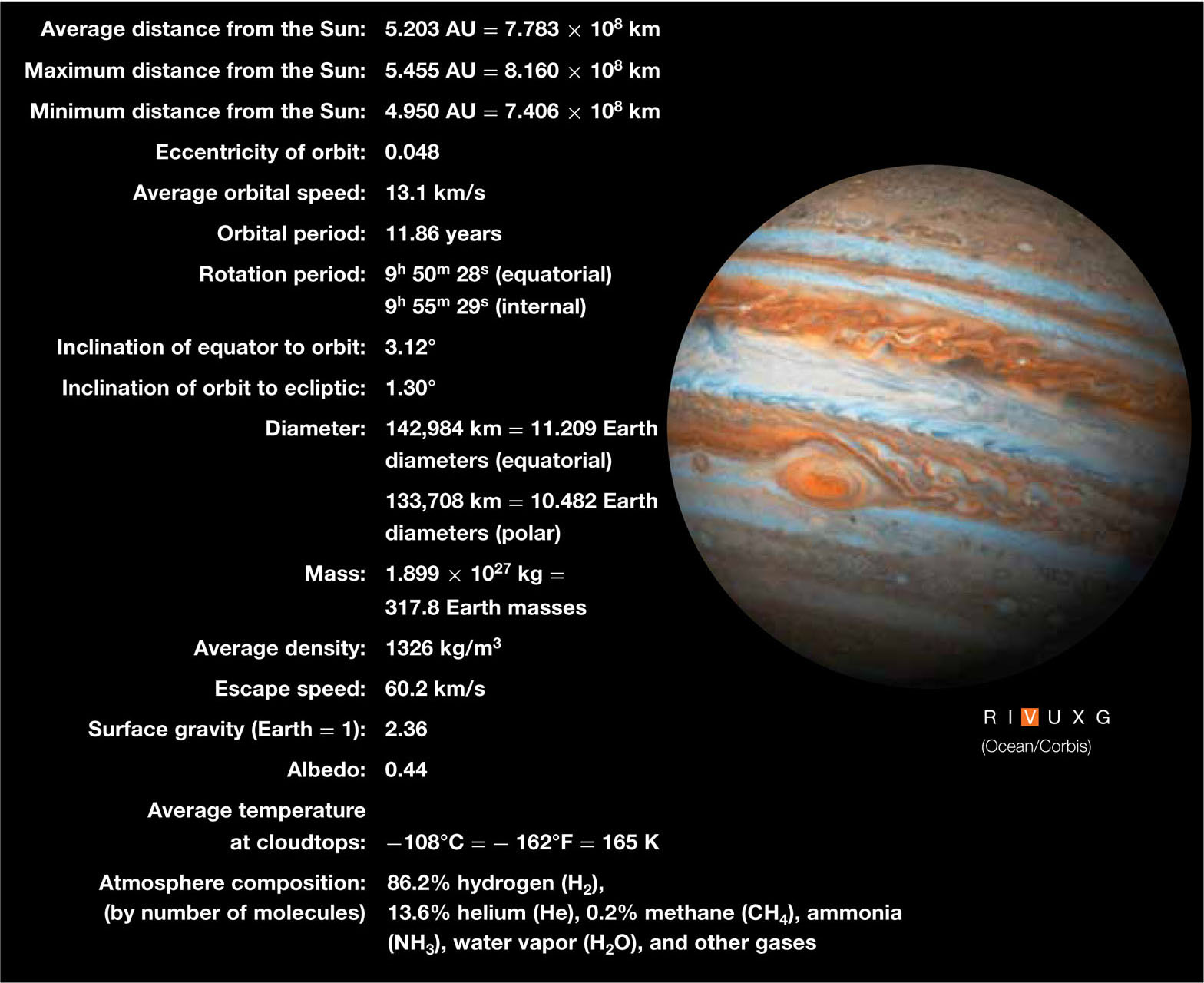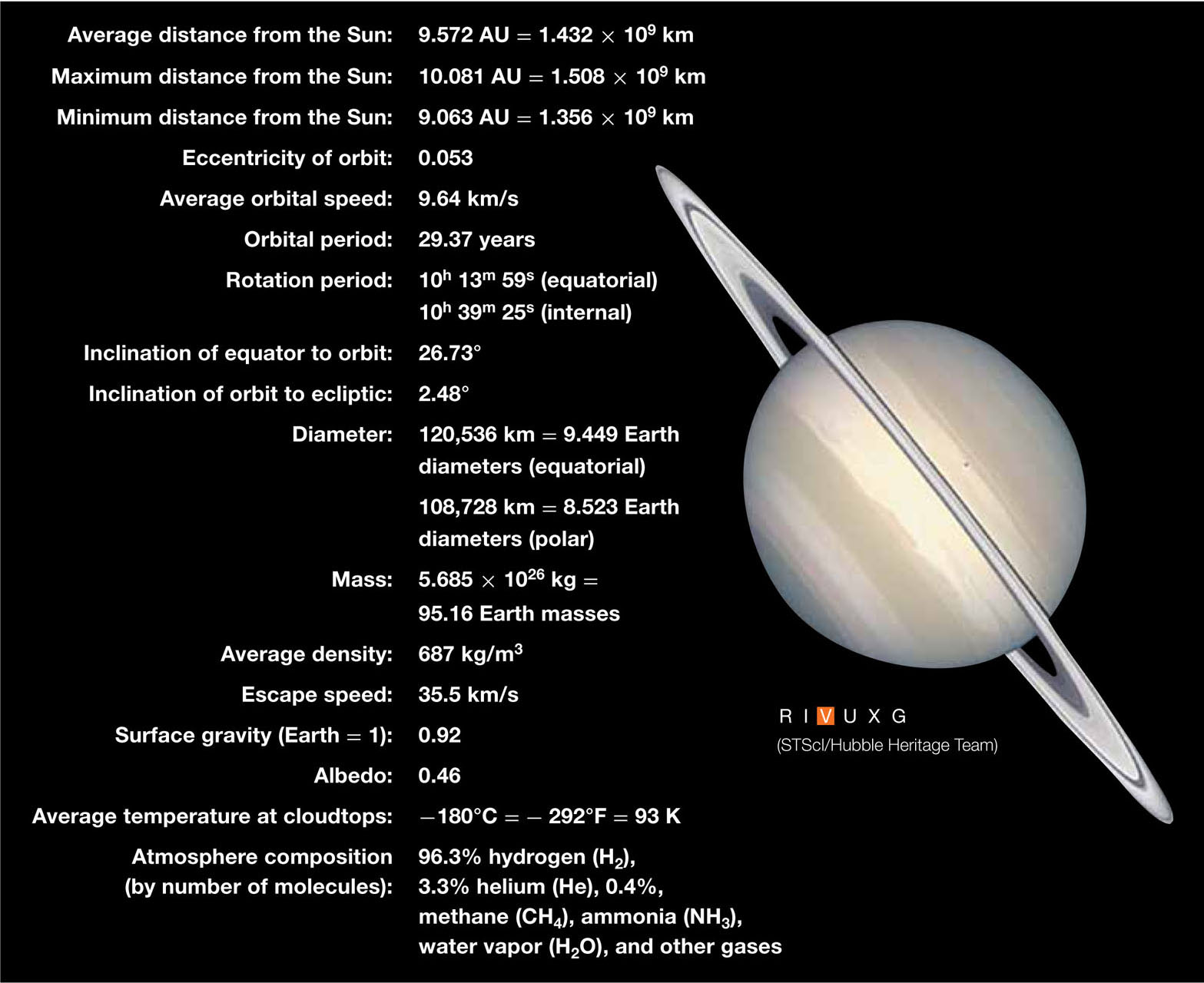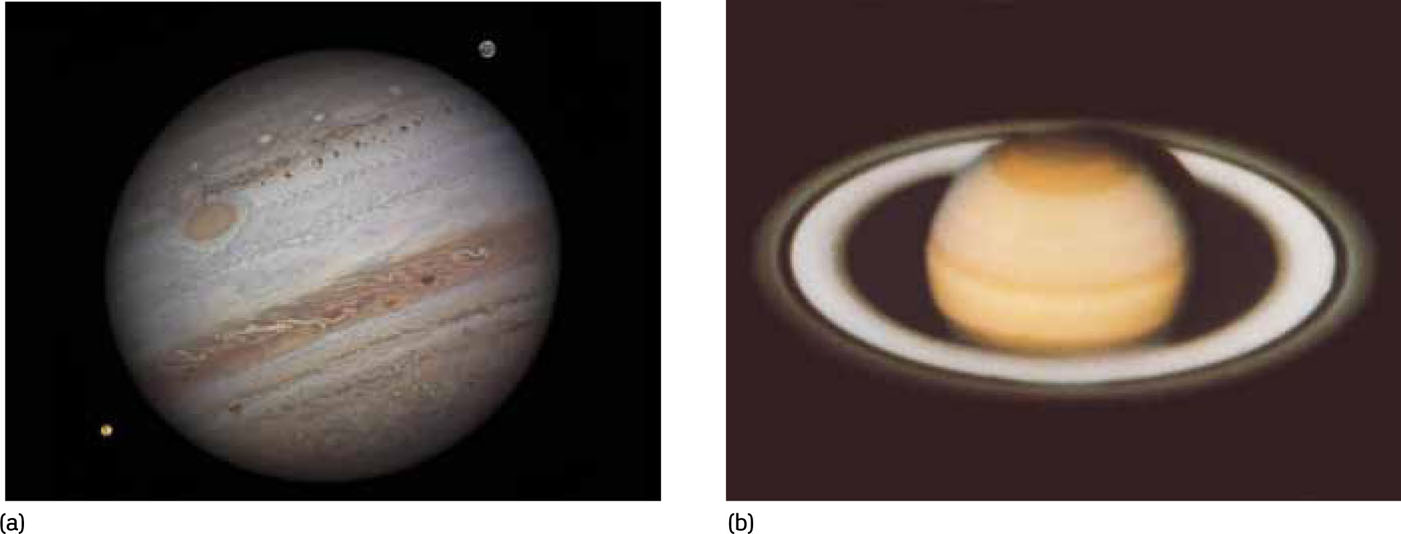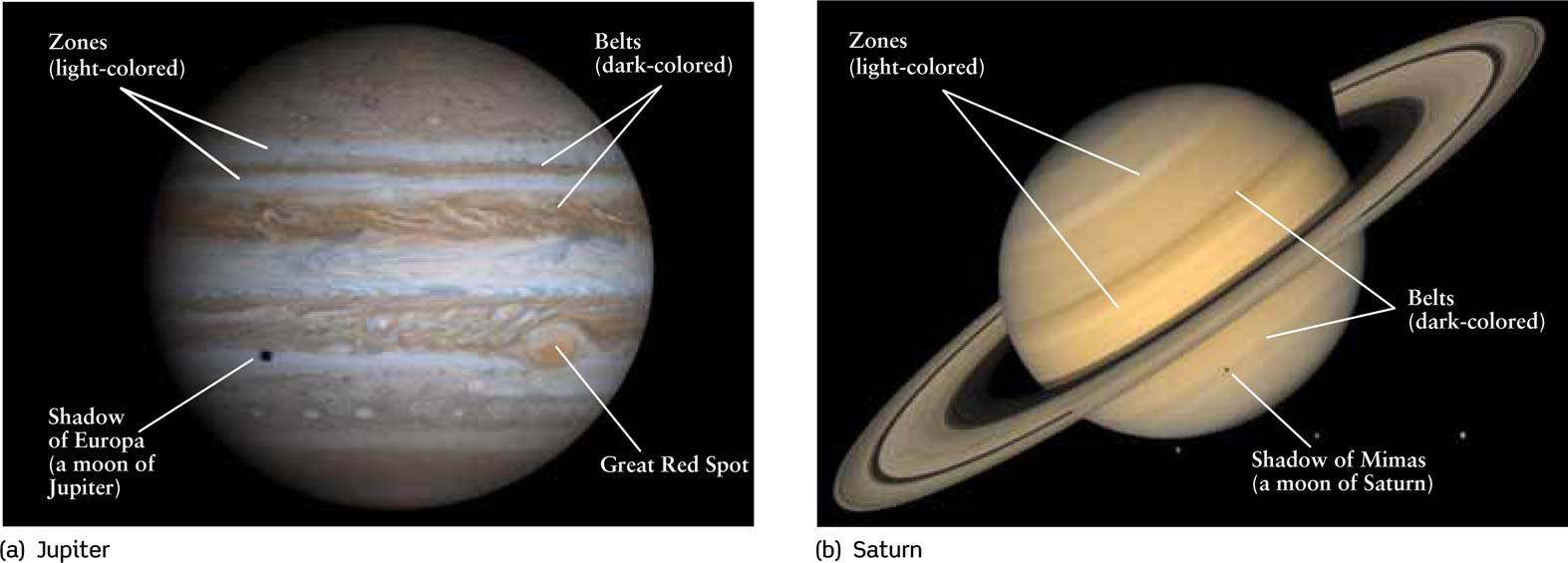12-1 Jupiter and Saturn are the most massive planets in the solar system
Jupiter and Saturn are respectively the largest and second largest of the planets, and the largest objects in the solar system other than the Sun itself. Astronomers have known for centuries about the huge diameters and immense masses of these two planets. Given the distance to each planet and their angular sizes, they used the small-angle formula (Box 1-1) to calculate that Jupiter is about 11 times larger in diameter than Earth, while Saturn’s diameter is about 9 times larger than Earth’s (see Figure 7-2). By observing the orbits of Jupiter’s four large moons and Saturn’s large moon Titan (see Table 7-2) and applying Newton’s form of Kepler’s third law (see Section 4-7 and Box 4-4), astronomers also determined that Jupiter and Saturn are, respectively, 318 times and 95 times more massive than Earth. In fact, Jupiter has 2½ times the combined mass of all the other planets, satellites, asteroids, meteoroids, and comets in the solar system. A visitor from interstellar space might well describe our solar system as the Sun, Jupiter, and some debris! Table 12-1 and Table 12-2 list some basic data about Jupiter and Saturn.
TABLE 12-1 JUPITER DATA

TABLE 12-2 SATURN DATA

Observing Jupiter and Saturn
As for any planet whose orbit lies outside Earth’s orbit, the best time to observe Jupiter or Saturn is when they are at opposition. At opposition, Jupiter can appear nearly 3 times brighter than Sirius, the brightest star in the sky. Only the Moon and Venus can outshine Jupiter at opposition. Saturn’s brightness at opposition is only about 1/7 that of Jupiter, but it still outshines all of the stars except Sirius and Canopus.
Through a telescope, Jupiter at opposition presents a disk nearly 50 arcsec in diameter, approximately twice the angular diameter of Mars under the most favorable conditions (Figure 12-1a). Because Jupiter takes almost a dozen Earth years to orbit the Sun, it appears to meander slowly across the 12 constellations of the zodiac at the rate of approximately one constellation per year. Successive oppositions occur at intervals of about 13 months.

Jupiter and Saturn as Viewed from Earth (a) The disk of Jupiter at opposition appears about 2½ times larger than (b) the disk of Saturn atopposition. Both planets display dark and light bands, though these are fainter on Saturn.
Saturn’s orbital period is even longer, more than 29 Earth years, so it moves even more slowly across the zodiac. If Saturn did not move at all, successive oppositions would occur exactly one Earth year apart; thanks to its slow motion, Saturn’s oppositions occur at intervals of about one year and two weeks. At opposition Saturn appears as a disk about 20 arcsec in diameter, with a dramatic difference from Jupiter: Saturn is surrounded by a magnificent system of rings (Figure 12-1b). Later in this chapter we will examine these rings in detail.
Dark Belts and Light Zones
Even a small telescope reveals colored bands on Jupiter and rings around Saturn
As seen through an Earth-based telescope, both Jupiter and Saturn display colorful bands that extend around each planet parallel to its equator (Figure 12-1). More detailed close-up views of Jupiter from a spacecraft (Figure 12-2a) show alternating dark and light bands parallel to Jupiter’s equator in subtle tones of red, orange, brown, and yellow. The dark, reddish bands are called belts, and the light-colored bands are called zones. The image of Saturn in Figure 12-2b shows similar features, but with colors that are much less pronounced. (We will see in Section 12-4 how differences between the atmospheres of Jupiter and Saturn can explain Saturn’s washed-out appearance.)


 Jupiter and Saturn as Viewed from Space (a) This view of Jupiter is a composite of four images made by the Cassini spacecraft as it flew past Jupiter in 2000. (b) Images from the Voyager 2 spacecraft as it flew past Saturn in 1981 were combined to show the planet in approximately natural color.
Jupiter and Saturn as Viewed from Space (a) This view of Jupiter is a composite of four images made by the Cassini spacecraft as it flew past Jupiter in 2000. (b) Images from the Voyager 2 spacecraft as it flew past Saturn in 1981 were combined to show the planet in approximately natural color.
In addition to these conspicuous stripes, a huge, red-orange oval called the Great Red Spot is often visible in Jupiter’s southern hemisphere. This remarkable feature was first seen by the English scientist Robert Hooke in 1664 but may be much older. It appears to be an extraordinarily long-lived storm in the planet’s dynamic atmosphere. Saturn has no long-lived storm systems of this kind. However, many careful observers have reported smaller spots and blemishes in the atmospheres of both Jupiter and Saturn that last for only a few weeks or months.